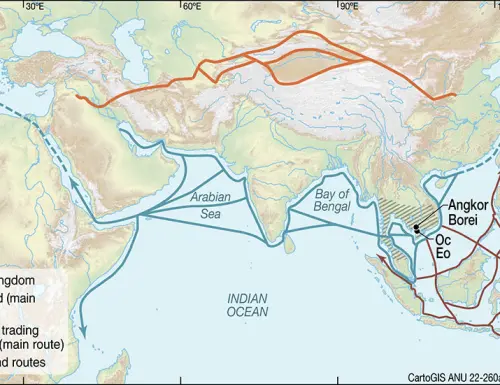After 2000 years, the stone slab retains the scent of nutmeg. Unearthed in a historic village in southern Vietnam, this cookware, roughly resembling an anvil in size and shape, was likely utilized for grinding spices, including those familiar in contemporary curries. Reported in Science Advances today, this discovery represents the earliest known instance of spice processing in mainland Southeast Asia. Moreover, it suggests that ancient visitors from India and Indonesia may have introduced their culinary customs to the region thousands of years ago.
"For a long time, we have acknowledged the strong Indian influence on Southeast Asian communities," says Charles Higham, an archaeologist from the University of Otago not associated with this research. He points out that during that era, the two regions shared numerous architectural, linguistic, and religious similarities. The recent study, according to Higham, offers "conclusive evidence" that this influence also extended to culinary practices.
The grinding stone was found at a site called Óc Eo, located amidst a network of ancient canals in the southwestern part of the Mekong Delta. Óc Eo was once a prominent port for the kingdom of Funan, which existed from the first to the seventh century C.E. Since its excavation in the 1940s, Óc Eo has yielded a plethora of artifacts indicating that the city was at the crossroads of an extensive trade network, stretching as far as the Mediterranean Sea. Khanh Trung Kien Nguyen, an archaeologist from the Southern Institute of Social Sciences in Ho Chi Minh City, Vietnam, took a particular interest in a set of stone tools that he believed were used for preparing spices. Among these tools was a 75-centimeter-long footed grinding slab made of sandstone, resembling tools still used today for preparing spice paste. Similar objects have been found at ancient sites in India.

Nguyen's team discovered microscopic traces of plant matter, including numerous starch grains, still clinging to the tools. By closely examining these grains under a microscope and comparing them with samples from over 200 species, they positively identified eight different spices, such as turmeric, ginger, clove, cinnamon, and nutmeg. Remarkably, even after 2000 years, one seed still emitted a distinct nutmeg aroma.
"The preservation of plant remains in Óc Eo is extraordinary," says Hsiao-chun Hung, an archaeologist at the Australian National University (ANU) who collaborated on the project. She believes that the humid climate of southern Vietnam helped protect the remains from degradation. "When we first uncover the seeds from the muddy soil, they appear surprisingly fresh, making it hard to believe they are nearly 2000 years old." The combination of ingredients found at Óc Eo is still used in curries throughout Southeast Asia today. However, the term "curry" may not fully encompass the various nuances of the region's cuisine. The term originated with European colonists, who used it as a general label for spiced dishes from southern Asia. However, "curry" can take many different forms, and understanding the distinctions between different regional cuisines was crucial to Nguyen and Hung's analysis.
Many of the spices discovered at Óc Eo, such as clove and nutmeg, are native to South Asia and eastern Indonesia. Their presence in an ancient Vietnamese city indicates that travelers from these regions brought their traditional recipes to mainland Southeast Asia during the early centuries C.E. Some of these journeys spanned several thousand kilometers.
"This research is groundbreaking," says Peter Bellwood, an archaeologist at ANU who was not involved in the study. Historians have long suspected the existence of early trade contact between South Asia and Funan, and the discovery at Óc Eo "provides a new level of confirmation."
The recipes introduced to Vietnam by traders were adapted by locals, who added familiar ingredients to create a unique culinary tradition. While many spices found at Óc Eo were likely imported, others were indigenous to Southeast Asia. Some, like various types of ginger, are still commonly used in Thai and other Southeast Asian cuisines but are rarely found in similar dishes from India. Nguyen and Hung also identified traces of coconut on the tools, suggesting that spices used at Óc Eo were thickened with coconut milk, a characteristic technique of modern Southeast Asian curry.
"The curry recipe used today has not significantly deviated from the ancient Óc Eo period," says Nguyen, who notes that the use of turmeric, clove, and cinnamon has remained consistent over the centuries. "This continuity highlights the lasting essence of curry flavors in Vietnamese cuisine." Even almost 2000 years after the cultural exchange between South Asia and Southeast Asia began, we can still taste—and smell—the legacy it left behind.



















